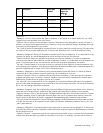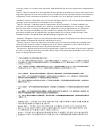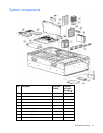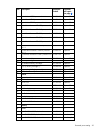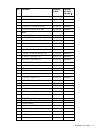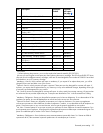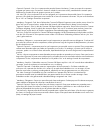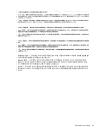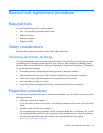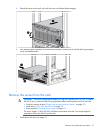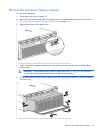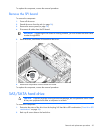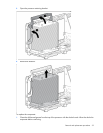
Removal and replacement procedures 25
Removal and replacement procedures
Required tools
You need the following items for some procedures:
• Torx T-15 screwdriver (provided with the server)
• Phillips screwdriver
• Flathead screwdriver
• Diagnostics Utility
Safety considerations
Before performing service procedures, review all the safety information.
Preventing electrostatic discharge
To prevent damaging the system, be aware of the precautions you need to follow when setting up the system
or handling parts. A discharge of static electricity from a finger or other conductor may damage system
boards or other static-sensitive devices. This type of damage may reduce the life expectancy of the device.
To prevent electrostatic damage:
• Avoid hand contact by transporting and storing products in static-safe containers.
• Keep electrostatic-sensitive parts in their containers until they arrive at static-free workstations.
• Place parts on a grounded surface before removing them from their containers.
• Avoid touching pins, leads, or circuitry.
• Always be properly grounded when touching a static-sensitive component or assembly.
Preparation procedures
To access some components and perform certain service procedures, you must perform one or more of the
following procedures:
• Power down the server (on page 26).
If you must remove a server from a rack or a non-hot-plug component from a server, power down the
server.
• Extend the server from the rack (on page 26).
If you are performing service procedures in an HP, Compaq branded, telco, or third-party rack, you can
use the locking feature of the rack rails to support the server and gain access to internal components.
For more information about telco rack solutions, refer to the RackSolutions.com website
(http://www.racksolutions.com/hp).



